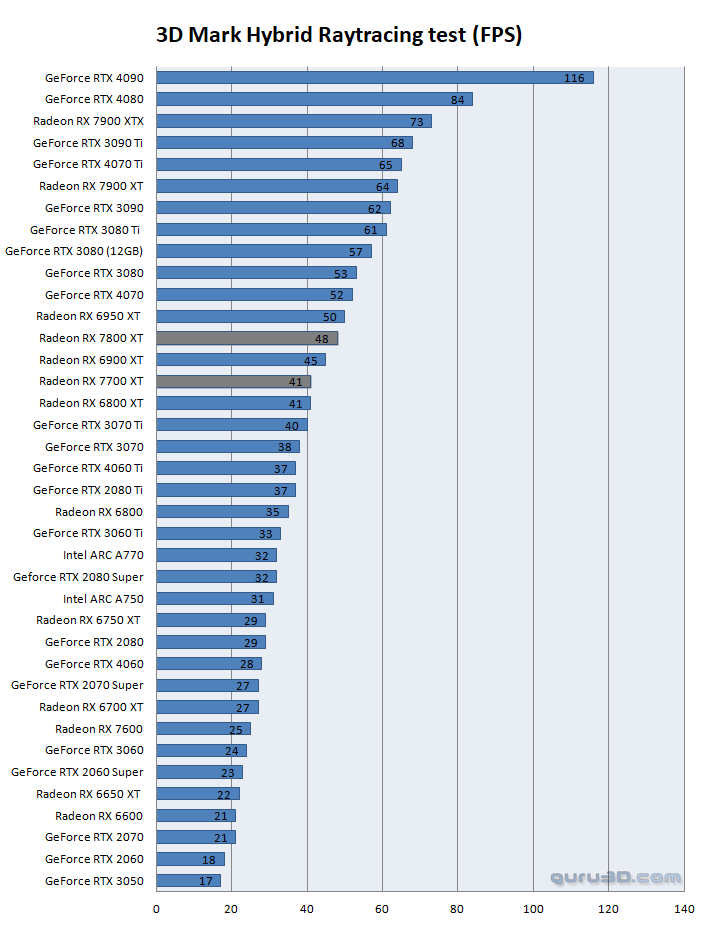(Raytracing) DXR Raytracing performance - Synthetic
DirectX Hybrid Raytracing
We have a handful of applications available to measure, to a certain extent, DirectX ray-tracing. Below, the results for the Port Royale DX-Raytracing test. The results below are reference card results. You can argue the test itself and how good it looks, but 3DMark offers a valid hybrid ray-tracing test that applies shadows and reflections that are raytraced. And as such, we can observe generational performance increases. Please note that the result set below is based on the reference review and serves as an indication of the performance of cards in the same class.
DirectX Raytracing (full path)
Real-time ray tracing is hefty on the GPU. The latest graphics cards have dedicated hardware that’s optimized for ray-tracing operations. Despite the advances in GPU performance, the demands are still too high for a game to rely on ray tracing alone. That’s why games use ray tracing to complement traditional rendering techniques. The 3DMark DirectX Raytracing feature test is designed to make ray-tracing performance the limiting factor. Instead of relying on traditional rendering, the whole scene is ray-traced and drawn in one pass. The test result depends entirely on ray-tracing performance, which means you can measure and compare the performance of dedicated ray-tracing hardware in the latest graphics cards.
Hybrid Raytracing is what you see currently in games. Here the game is using the traditional shading render and applies Raytracing effects like shadows and reflections. So what we measure below is pure raytracing.



